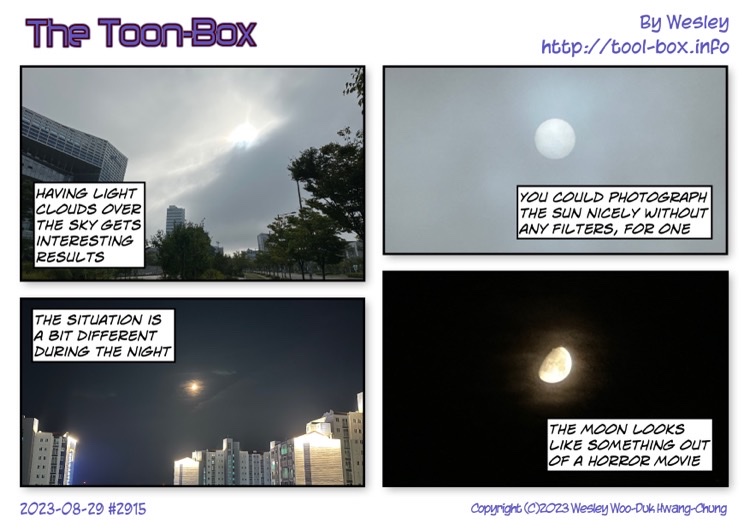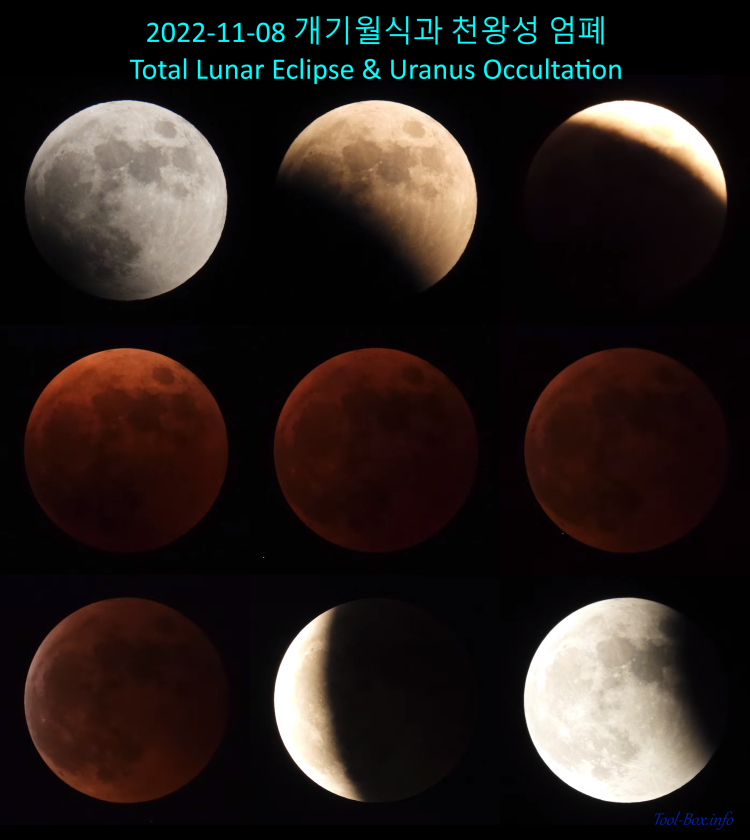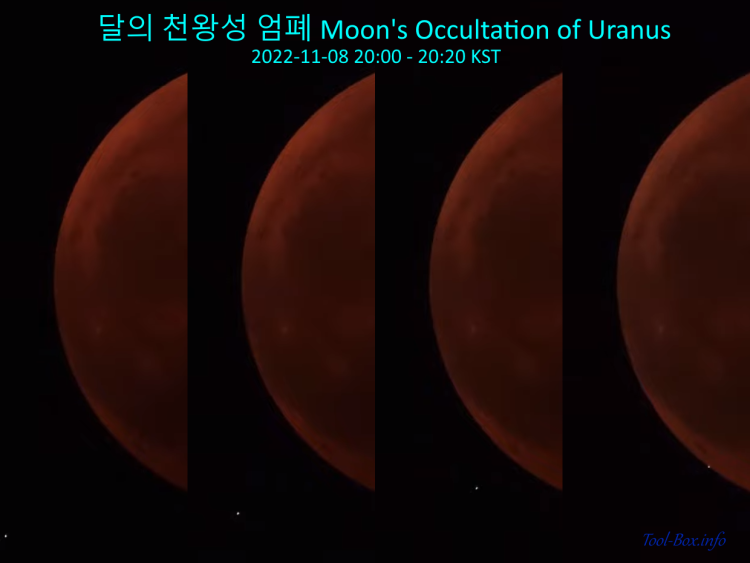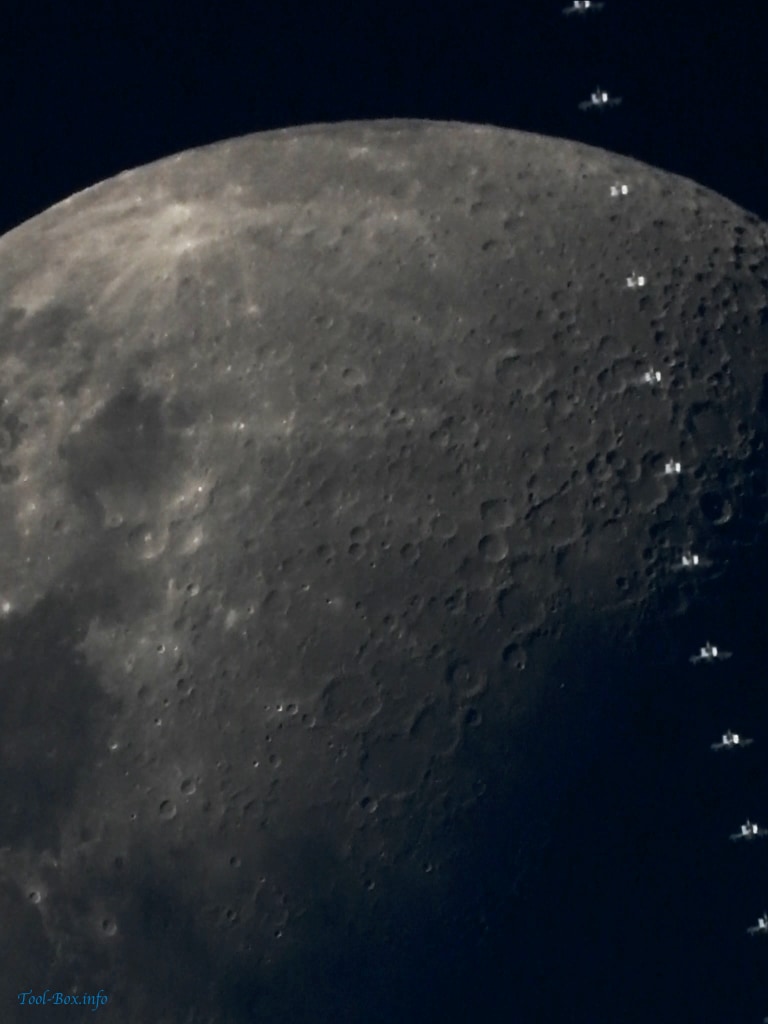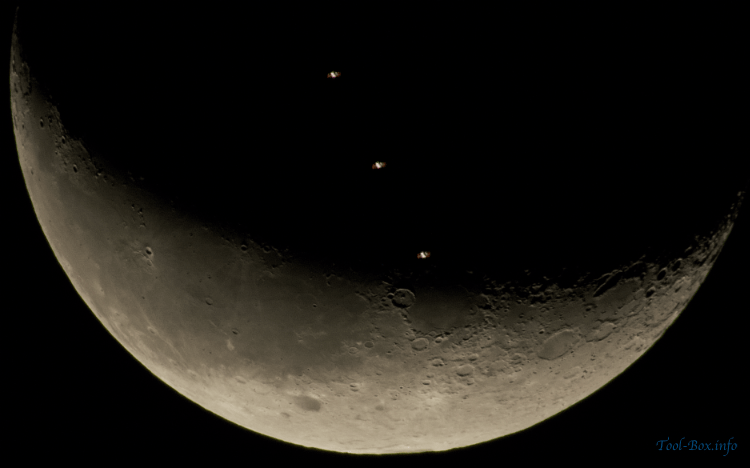Entries tagged as Moon
astronomy camera Sanyo VPC-C4 satellite Minolta Dimage X20 binoculars Chuseok telescope eclipse Kodak Z1085 IS star Sun iPhone 4 Canon SX50 HS planet Saturn constellation Lyra lightning ISS Jupiter iPhone 5S Canon EOS 450D Venus C/2013 R1 Lovejoy comet CHDK smog airplane Boötes Andromeda galaxy flare Iridium Alhena Orion Mars Celine Chung Hayun Chung HT-Mini v2 toy MetOp-A Ursa Minor Leo Minor Ursa Major A1533 slow motion A1530 LTE iOS iPhone 4S sound electric fan LED light trail M&M's A1524 iPhone 6 Plus OIS Cortex Camera Focus Pixels A1522 A1549 A1586 barometer belt case iOS 8 iPad iPad mini iPhone 3GS iPhone 5 iPhone 5C iPhone 6 KT LGU+ Bushnell 8x40 Bitgaram City KPX Naju fog Celestron NexStar 6SE Snapzoom asteroid Josephina Neptune Sony A5000 Triton teleconverter duck river Sung-Eun Kim Yeongsan cafeteria ice persimmon Korean dress rice cake beach firework Ulsan beverage chocolate dwarf planet Pluto Jeonnam Science Festival Messier 11 Messier 2 adapter iPhone 6S Plus artificial star collimation focal reducer 3DMark Geekbench Octane SunSpider Touch ID battery PeaceKeeper charger box iPhone 6+ iPhone 7 iPhone 7 Plus Raynox DCR-1540PRO Vivitar 2.0X iOptron SkyTracker Nikon D3300 Samyang Polar 800mm Toast TP-2 Bode's Galaxy Cigar Galaxy Ceres Heze Vesta Zeta Virginis AT&T SK Telecom fingerprint sensor M7 pedometer Kraken performance accelerometer compass gyroscope Han-gang Seoul passcode iPhone X Goheung Naro Space Center travel Nikon CoolPix P1000 Bolt EV car electric SpaceX Dragon Jeonju space station Tiangong electric vehicle expressway parking lot service area Boeing Daejeon international spacecraft C/2014 Q2 Lovejoy nebula Taurus Kiwi Fotos KF-8012N iPhone 11 Pro Singapore Uranus Hiroshima iPhone 16 Pro Japan Milky Way meteor shower Perseids Scorpius iPhone XS Bode’s Galaxy China Korea lunar calendar shipping convenience store tea candy snack game Simpsons: Tapped Out Comic Life OS X Crop-Size image resizer Resize Image Resize Photo SimpleResize Apple Watch iOS 9 watch watchOS 2 cable Micro-USB USB iOS 12 iPad Pro 9.7 apple iOS 13 memory MicroSD storage M8 Reachability screen protector VoLTE Apple Pay credit card debit card NFC RFID Manually apple cider soft drink Canada Hong Kong T-Mobile USA Verizon Apple Store Fukuoka Fukuoka Airport Incheon International Airport subway Europe O2E Smart Multi-Charger power plug UK iOS 10 arrow hoop traditional amusement Tuho Apple Maps almond nuts walnut leather case Vega LTE-A VoIP repair screen Screen Glue Ferris wheel Goat Simulator COEX bus snow contamination water fine dust building road Pepero Pepero Day KEPCO relocation cabinet electricity EMS K-EMS New EMS Wesley Woo-Duk Hwang-Chung monument construction lake park broiled eels eel BHC chicken Mac mini server book library blizzard Lotteria New Year's Day snow angel Cajun Fries Mom's Touch Thigh Burger KTX-Sancheon meal box Series 2 Gwangju food truck Chappie Gwangju Songjeong Station Megabox movie movie theatre Burger King restaurant farm garden coffee shop sidewalk Gochunaengi pork cutlet sushi T-adapter 2015 TB145 Sombrero Galaxy Christmas tree decoration balls lights sled screwdriver table cookie milk Oreo Homeplus pizza chocolate chip cookies couch FaceTime Skype tteokguk computer swing Toys R Us trampoline Mega Kids Box tortilla wrap toothbrush salad Disney Frozen remote controlled helicopter replacement Syma S107G Danish butter cookies animation Larva shopping cart Haenam Songho seashell festival crow cat Costco shopping Hyundai Ioniq 5 tailor fire KSLV-II Nuri rocket pond Muan station train Ades maple pie bread cake walnut cake Seoul National University Australia macadamia cup date Dubai gift mall Starbucks airport Duty-Free coffee latte
Total lunar eclipse with Uranus occultation
Posted by Wesley onThis year's lunar eclipse was a long one, with the added bonus of having Uranus occulted by the Moon during the totality. This doesn't happen very often, and the next one is supposedly more than 200 years away. So I prepared my equipment and observed the progress at a good spot near home.
I did have some difficulties during the 4-hour session, as one camera battery couldn't last that long and dew was building up on the lens after 9 PM. But using a camera with a powerful zoom worked great for capturing the Uranus approaching and then hiding behind the Moon. It was literally a once-in-a-lifetime observation.
Device: Nikon P1000
Settings: 1500mm - f/6.3 (ISO 800 to 1600 / 1/3 to 1/250s)
Filters: None
Time: 2022-11-08 18:07 - 21:40 KST
Location: Naju, Korea
ISS brushing past afternoon Moon
Posted by Wesley onWhile the Sun is up in the sky, the Moon is still visible at the right phases due to its brightness. Although the Int'l Space Station can also become bright, it's only visible shortly before to about an hour after sunset. So when I found out that it was to pass in front of the Moon while the sky was fairly bright (36 minutes before sunset), I wasn't sure of the results. Would it look brighter or darker than the Moon? Would it even be visible when it's not in front of the Moon?
These questions were cleared up when I got the Moon at that moment on video. Because of the uncertainties and the quickness of the pass, I used 4k 30fps recording instead of the usual 7-frame burst mode on the P1000 camera. The prediction calculation was slightly off and the ISS was not centered, but I still managed to get more than 10 useful frames. The fuzziness is due to video compression, but it's far better than nothing. Interestingly enough, the radiators on the space station were quite a bit brighter than the surface of the Moon in general.
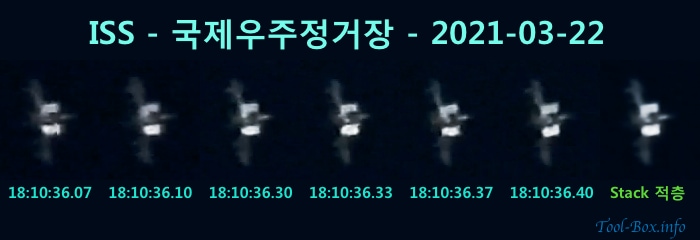
When we take a closer look, the prominent features of the ISS are easily discernible. The solar panels are stretching from top to bottom, while the Russian modules Zvezda (right) and Zarya (center) are more illuminated than the multi-national modules on the left. Considering this success, it looks like I should try the video recording again for the next ISS pass.
Device: Nikon P1000
Settings: 3000mm - ISO 400 - 1/1000s - f/8
Filters: None
Time: 2021-03-22 18:10:36 KST
Location: Buan, Korea
12 video frames processed with Pixelmator Pro 2.0
Illuminated ISS crossing waning Moon
Posted by Wesley onThe International Space Station is usually in the Earth's shadow when it makes a pass in front of the Moon. But when the conditions are just right, you can see both illuminated by the Sun just like the photo I took above. When seen with the naked eyes, it looked as if a bright meteor was darting across the sky towards the Moon and eventually pass right through it. To witness this, I drove about 40km northeast to the edge of Damyang in the early morning.
Device: Nikon P1000
Settings: 3000mm - ISO 400 - 1/500s - f/8
Filters: None
Time: 2020-11-11 05:36:43 KST
Location: Damyang, Korea
6 photos processed with RegiStax 6.1.0.8 and Pixelmator Pro 1.8
Today’s “The Toon-Box”
Posted by Wesley on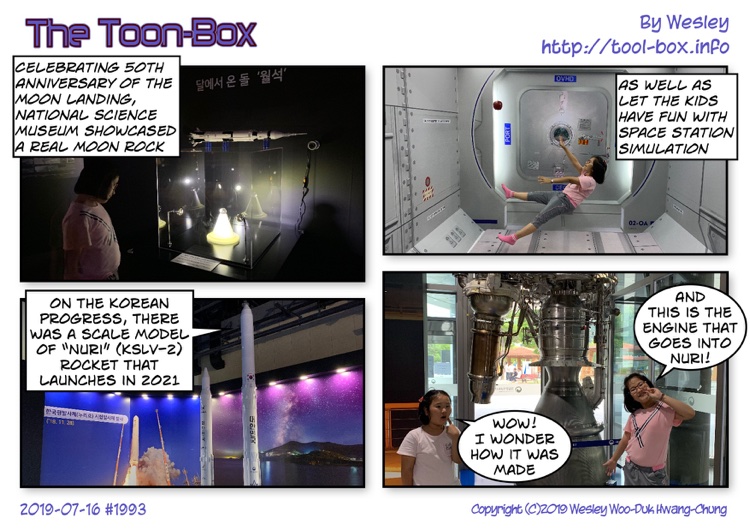
Defined tags for this entry: Celine Chung, Daejeon, Hayun Chung, KSLV-II, Moon, museum, National Science, Nuri, rock, rocket, satellite
